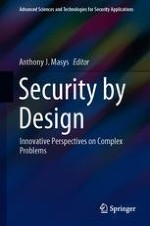2018 | OriginalPaper | Chapter
Advances in Cybersecurity Design: An Integrated Framework to Quantify the Economic Impacts of Cyber-Terrorist Behavior
Authors : JiYoung Park, Jason Levy, Minsu Son, Changkeun Park, Ha Hwang
Published in: Security by Design
Publisher: Springer International Publishing
Activate our intelligent search to find suitable subject content or patents.
Select sections of text to find matching patents with Artificial Intelligence. powered by
Select sections of text to find additional relevant content using AI-assisted search. powered by
